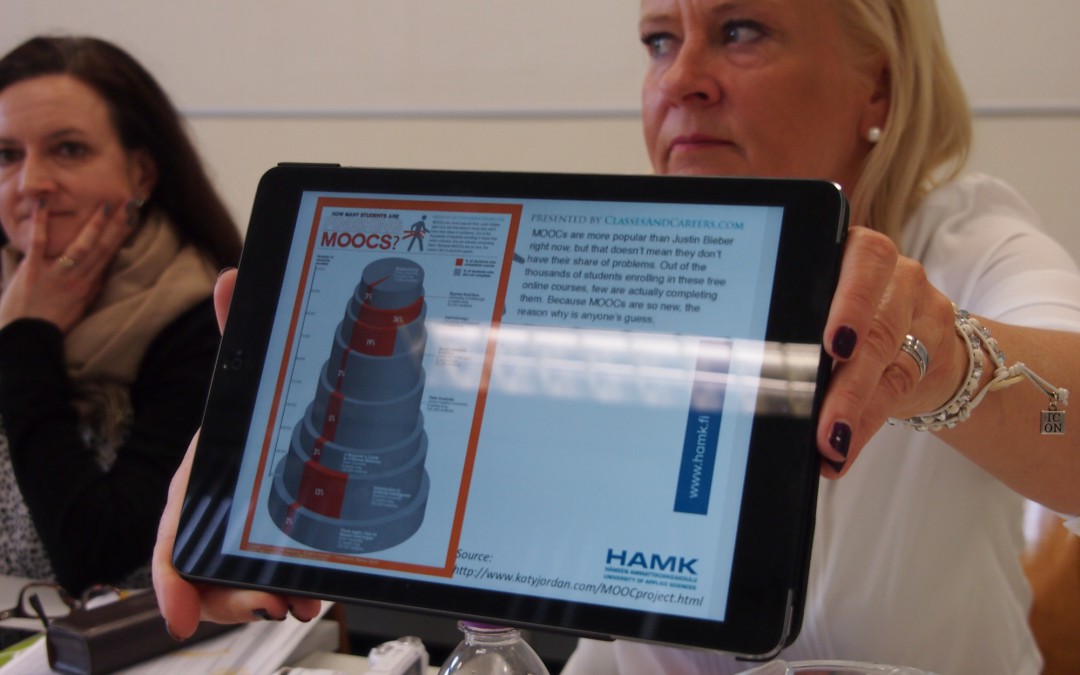How to design cMOOC?
Sanna Ruhalahti
Teacher trainer, HAMK School of Professional Teacher Education
The ways in which we work and learn are changing rapidly.
These changes require research and competencies that are not only new, but which also respond to the requirements of the digital age. The extensive social phenomena and pressures that are a result of digitalisation also call for more careful consideration. Digitalisation requires us to renew educational structures.
Massive open online courses (MOOC) and their associated pedagogical decisions can promote the development of digitalisation. Open online courses necessitate a stricter pedagogical structure that enables authentic learning and dialogue based on collaborative knowledge creation.
The article “The dialogical authentic netlearning activity (DIANA) model for collaborative knowledge construction in MOOC” presents a case study showing how the DIANA (Dialogical Authentic Netlearning Activity) pedagogical model was used to support collaborative knowledge construction in a micro open online course titled “Making learning personal”.
The case study of the article – cMOOC “Making learning possible” – was developed and test run during the EU-project MAPPING.
This cMOOC was one of the new teacher trainings that were developed to support individualized learning in vocational education and training.
Read more about MAPPING and the productions during this EU-project (2013-2015):

